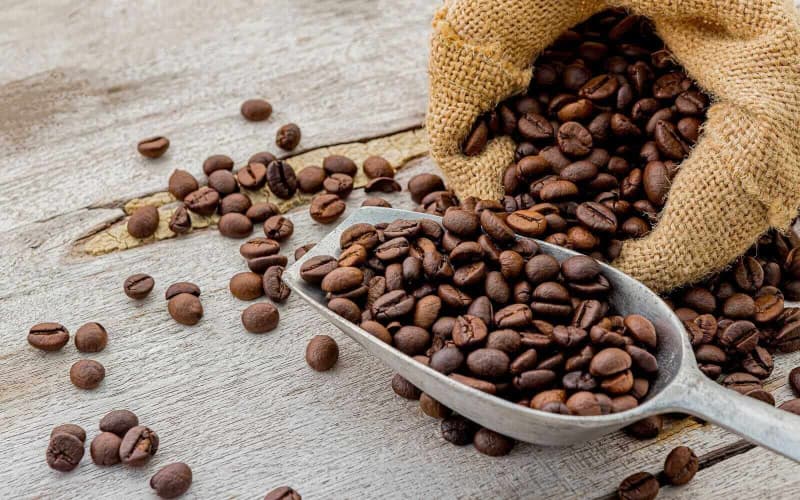
December arabica coffee (KCZ25) is down -10.0 (-2.58%), and November ICE robusta coffee (RMX25) is down -111 (-2.43%).
Coffee prices today extended the sharp declines seen late last week after arabica coffee last Thursday posted an 8.75-month nearest-futures high and robusta posted a 2-month high.
Coffee prices are trading lower on hopes for relief from US tariffs on US imports from Brazil, including coffee. Brazil’s President Luiz Inacio Lula da Silva said today he had a “surprisingly good” meeting with President Trump on the sidelines of the ASEA…

December arabica coffee (KCZ25) is down -10.0 (-2.58%), and November ICE robusta coffee (RMX25) is down -111 (-2.43%).
Coffee prices today extended the sharp declines seen late last week after arabica coffee last Thursday posted an 8.75-month nearest-futures high and robusta posted a 2-month high.
Coffee prices are trading lower on hopes for relief from US tariffs on US imports from Brazil, including coffee. Brazil’s President Luiz Inacio Lula da Silva said today he had a “surprisingly good” meeting with President Trump on the sidelines of the ASEAN summit in Malaysia and that there could be a “definitive solution” on US-Brazil trade within days. The thaw may be tied to Brazil’s status as the world’s second-largest producer of rare earth minerals, behind China.
Coffee prices are trading lower despite today’s report from Somar Meteorologia that Brazil’s largest arabica coffee-growing area, Minas Gerais, received only 0.3 mm of rain during the week ended October 24, or 1% of the historical average.
Robusta coffee was undercut by last Friday’s bearish forecast from the Vietnam Coffee and Cocoa Association (Vicofa) that Vietnam’s coffee output in 2025/26 will be 10% higher than the previous crop year if weather conditions remain favorable.
Coffee prices remain underpinned by concern that excessive dry conditions in Brazil during the critical flowering period for coffee trees will threaten the 2026/27 coffee crop. According to the Bloomberg Brazil Weather Analysis, coffee-producing regions in Brazil have been experiencing an intense drought, with the state of Minas Gerais recording only about 70% of its average rainfall over the past month.
Coffee prices are supported by shrinking ICE coffee inventories. The 50% tariffs imposed on US imports from Brazil have led to a sharp drawdown in ICE coffee inventories. ICE-monitored arabica inventories fell to a 1.5-year low of 447,773 bags last Friday, and ICE robusta coffee inventories fell to a 3-month low of 6,130 lots last Friday. American buyers are voiding new contracts for Brazilian coffee purchases due to the 50% tariffs on US imports from Brazil, thereby tightening US supplies, as about a third of America’s unroasted coffee comes from Brazil.
Coffee prices garnered support after the National Oceanic and Atmospheric Administration (NOAA) on September 16 increased the likelihood to 71% of a La Niña weather system in the southern hemisphere from October to December, which could bring excessive dry weather to Brazil and harm the 2026/27 coffee crop. Brazil is the world’s largest producer of arabica coffee.
Robusta coffee is under pressure from increased supplies from Vietnam. The Vietnam National Statistics Office reported on October 13 that Vietnam’s Jan-Sep 2025 coffee exports rose +10.9% y/y to 1.230 MMT. Also, Vietnam’s 2025/26 coffee production is projected to climb +6% y/y to 1.76 MMT, or 29.4 million bags, a 4-year high. Vietnam is the world’s largest producer of robusta coffee.
Larger coffee exports are bearish for prices after the International Coffee Organization (ICO) reported on October 6 that global coffee exports for the current marketing year (Oct-Aug) rose +0.2% y/y to 127.92 million bags, indicating adequate exports and supplies.
Coffee prices found support after Conab, Brazil’s crop forecasting agency, cut its Brazil 2025 arabica coffee crop estimate on September 4 by -4.9% to 35.2 million bags from a May forecast of 37.0 million bags. Conab also reduced its total Brazil 2025 coffee production estimate by 0.9% to 55.2 million bags, from a May estimate of 55.7 million bags.
The USDA’s Foreign Agriculture Service (FAS) projected on June 25 that world coffee production in 2025/26 will increase by +2.5% y/y to a record 178.68 million bags, with a -1.7% decrease in arabica production to 97.022 million bags and a +7.9% increase in robusta production to 81.658 million bags. FAS forecasted that Brazil’s 2025/26 coffee production will increase by +0.5% y/y to 65 million bags and that Vietnam’s 2025/26 coffee output will rise by 6.9% y/y to a 4-year high of 31 million bags. FAS forecasts that 2025/26 ending stocks will climb by +4.9% to 22.819 million bags from 21.752 million bags in 2024/25.
On the date of publication, Rich Asplund did not have (either directly or indirectly) positions in any of the securities mentioned in this article. All information and data in this article is solely for informational purposes. For more information please view the Barchart Disclosure Policy here.